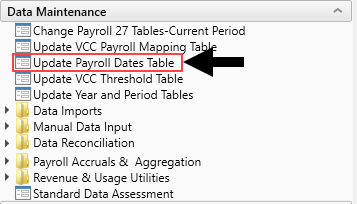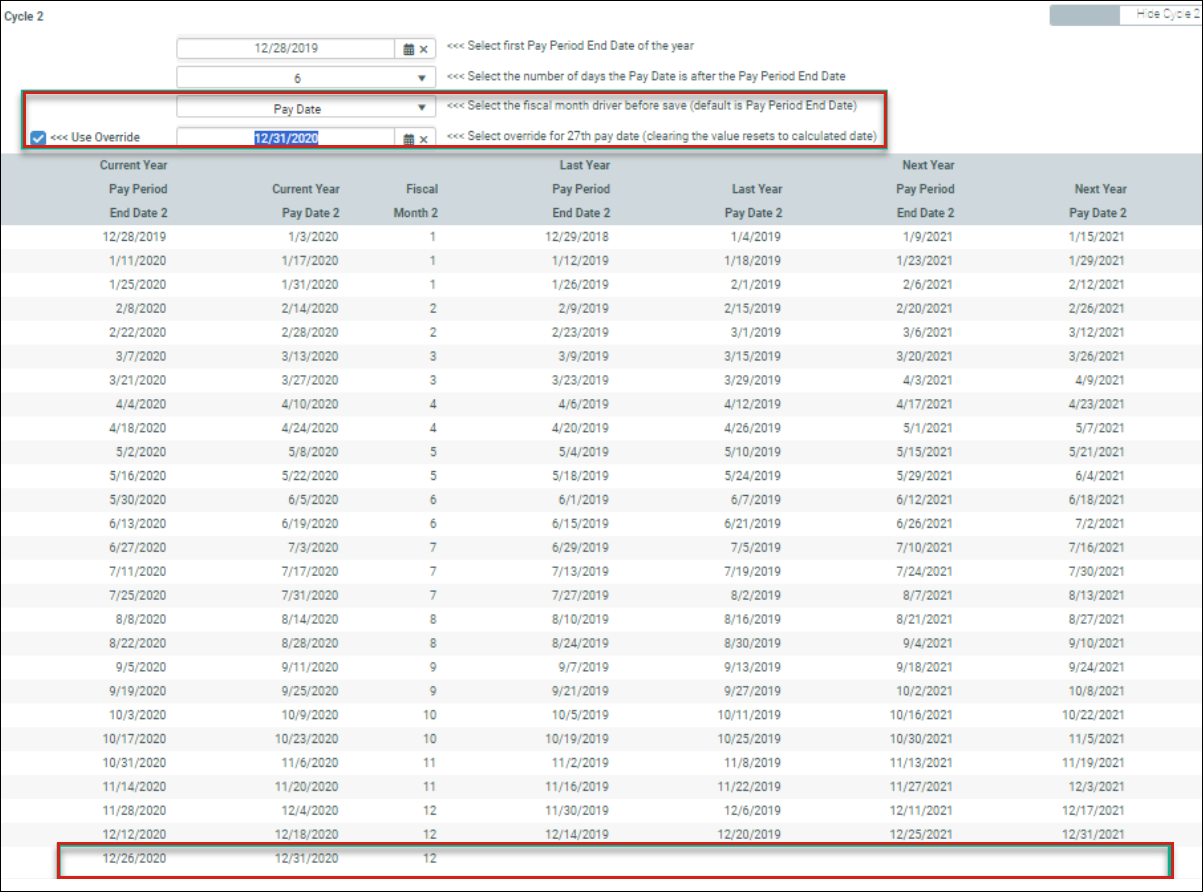Set payroll dates
The Payroll dates form calculates your organization's pay period dates for two pay cycles based on pay period ending date This option includes the first pay period with an end date in the current fiscal year. and pay date This option includes the first pay period with a pay date in the current fiscal year. fiscal month drivers.
In each cycle, the selected driver determines the "pay period end" and "pay dates" for the current, last, and next year. The system assigns each pay period to a fiscal month. The "Biweekly to monthly with LY" report uses this mapping to allocate payroll data to monthly values. Some monthly reports, such as the Month End Review Dashboard, use these results in their data.
IMPORTANT: If your organization uses more than two pay cycles, the table does not display it.
-
Go to Mgmt Admin > Data Maintenance and double-click Update Payroll Dates Table.

-
In Cycle 1 and Cycle 2, select the first pay period end date of the year.

TIP: You can hide or show Cycle 1 and 2 using the toggle under the Save button.
- Select the number of days the pay date is after the pay period end date.
-
Select a fiscal month driver.
-
Pay Period End Date (selected by default) This option includes the first pay period with an end date in the current fiscal year.
-
Pay Date This option includes the first pay period with a pay date in the current fiscal year.
-
Use Override. Pay Date provides an override option so you can select the final pay date in the intended fiscal year.
For example, you have a pay date that falls on January 1, which is a national holiday. The January 1 pay date also indicates a 27th pay period in the current fiscal year.

You can change the last pay date to December 31, or to a different day in the next fiscal year. This also helps accounting decide when in the current fiscal year to post the 27th pay period.

-
-
-
Click Save.
